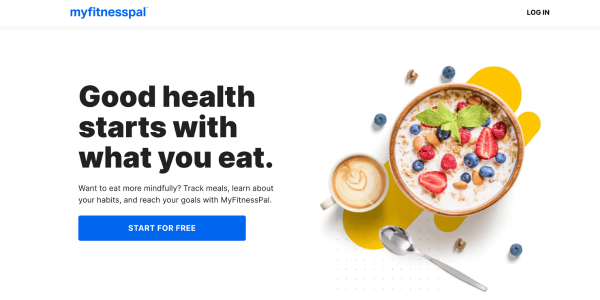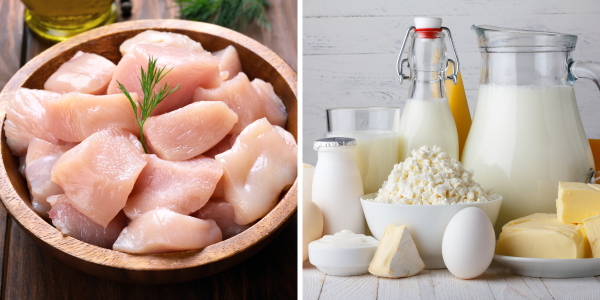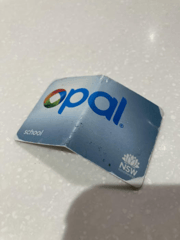Shocking truth uncovered: What’s forcing Aussies to change their eating habits?
By
VanessaC
- Replies 4
New research has uncovered the alarming reality many Australians are experiencing today when shopping for food.
Aussies are increasingly shying away from protein-rich sources of food to reduce costs, with 36 per cent of respondents admitting they are now less likely to pick up red meat in their weekly shop.
Likewise, 33 per cent of respondents said they are also shying away from purchasing costly protein bars and shakes. The rising prices are causing Aussies to alter their diet in ways that could harm their health.
Nutrition app MyFitnessPal fitness coach and ambassador Luke Hines says the findings directly result from the price hikes experienced across various groceries.
'With prices of beef surging 14 per cent in just a year (between 2021 and 2022), it is no surprise to see Australians opting to eat less red meat,' Mr Hines said.
'Thankfully, there are lower-cost alternatives to red meat, such as legumes, eggs, and tofu,' he added.
So, what kind of foods have Aussies turned to instead?
According to the study, popular protein-rich food such as chicken (28 per cent) and dairy (22 per cent) are the top two food groups that 1000 respondents surveyed now rely on for additional protein.
It’s important to note that these alternative protein sources can contain a lot of carbs. Mr Hines warns shoppers to read labels carefully and keep track of their nutritional intake.
How to Balance Healthy Eating with a Limited Budget
In these financially challenging times, it’s easy to feel overwhelmed and unsure how to maintain a healthy diet without overextending your budget. Here are some practical ways to shop smart while still nourishing your body:
The first step is planning meals and sticking to your shopping list at the grocery store. This simple practice can effectively curtail impulse purchases and prevent wastage. Consider buying items in bulk, like oats, rice, and dried beans, which are usually cheaper when bought in bulk and can be used in various healthy and satisfying meals.
Be sure to tackle the fresh produce aisle with a discerning eye. While fruits and vegetables are a crucial part of a balanced diet, not all are created equal when it comes to cost-effectiveness. Opt for in-season produce, which is usually cheaper and boasts a higher nutritional value.
Canned or frozen fruits and veggies offer a more affordable alternative to fresh produce. They are still packed a nutritional punch, with the bonus of a longer shelf-life–just make sure to choose those without added sugars or high sodium levels.
Finally, remember that good nutrition isn't solely about what you eat but also about what you drink. While we all love a good cuppa, cutting down on soft drinks and store-bought juices can save a significant amount in the long run. Opt instead for water, teas, or homemade fruit infusions, which are cheaper and offer various health benefits.
We know it’s not easy, but with some creativity and planning, you can make a real difference in your diet without breaking the bank! Here’s a protein-rich and affordable recipe you can try at home!

Following these simple tips can surely help you strike a balance between eating healthy and effectively managing your budget. If you have any suggestions or stories about budget-friendly meal planning and grocery shopping, share them with us in the comments below!
Aussies are increasingly shying away from protein-rich sources of food to reduce costs, with 36 per cent of respondents admitting they are now less likely to pick up red meat in their weekly shop.
Likewise, 33 per cent of respondents said they are also shying away from purchasing costly protein bars and shakes. The rising prices are causing Aussies to alter their diet in ways that could harm their health.
Nutrition app MyFitnessPal fitness coach and ambassador Luke Hines says the findings directly result from the price hikes experienced across various groceries.
'With prices of beef surging 14 per cent in just a year (between 2021 and 2022), it is no surprise to see Australians opting to eat less red meat,' Mr Hines said.
'Thankfully, there are lower-cost alternatives to red meat, such as legumes, eggs, and tofu,' he added.
So, what kind of foods have Aussies turned to instead?
According to the study, popular protein-rich food such as chicken (28 per cent) and dairy (22 per cent) are the top two food groups that 1000 respondents surveyed now rely on for additional protein.
It’s important to note that these alternative protein sources can contain a lot of carbs. Mr Hines warns shoppers to read labels carefully and keep track of their nutritional intake.
How to Balance Healthy Eating with a Limited Budget
In these financially challenging times, it’s easy to feel overwhelmed and unsure how to maintain a healthy diet without overextending your budget. Here are some practical ways to shop smart while still nourishing your body:
The first step is planning meals and sticking to your shopping list at the grocery store. This simple practice can effectively curtail impulse purchases and prevent wastage. Consider buying items in bulk, like oats, rice, and dried beans, which are usually cheaper when bought in bulk and can be used in various healthy and satisfying meals.
Be sure to tackle the fresh produce aisle with a discerning eye. While fruits and vegetables are a crucial part of a balanced diet, not all are created equal when it comes to cost-effectiveness. Opt for in-season produce, which is usually cheaper and boasts a higher nutritional value.
Canned or frozen fruits and veggies offer a more affordable alternative to fresh produce. They are still packed a nutritional punch, with the bonus of a longer shelf-life–just make sure to choose those without added sugars or high sodium levels.
Finally, remember that good nutrition isn't solely about what you eat but also about what you drink. While we all love a good cuppa, cutting down on soft drinks and store-bought juices can save a significant amount in the long run. Opt instead for water, teas, or homemade fruit infusions, which are cheaper and offer various health benefits.
We know it’s not easy, but with some creativity and planning, you can make a real difference in your diet without breaking the bank! Here’s a protein-rich and affordable recipe you can try at home!
Key Takeaways
- New research reveals that Australian dietary habits are changing due to pressure from increased cost of living.
- The study, commissioned by nutrition app MyFitnessPal, found that 36 per cent of respondents are now less likely to buy red meat during their weekly shop, and 33 per cent are avoiding protein bars and shakes.
- MyFitnessPal fitness coach, Luke Hines, recognises rising prices as the key reason for the shift in dietary choices but also noted cheaper protein alternatives such as legumes, eggs, and tofu.
- The data collected from over 1000 Australians nationwide says popular protein-rich foods like chicken (28 per cent) and dairy (22 per cent) are the top two food groups Australians are considering to supplement their protein intake.









